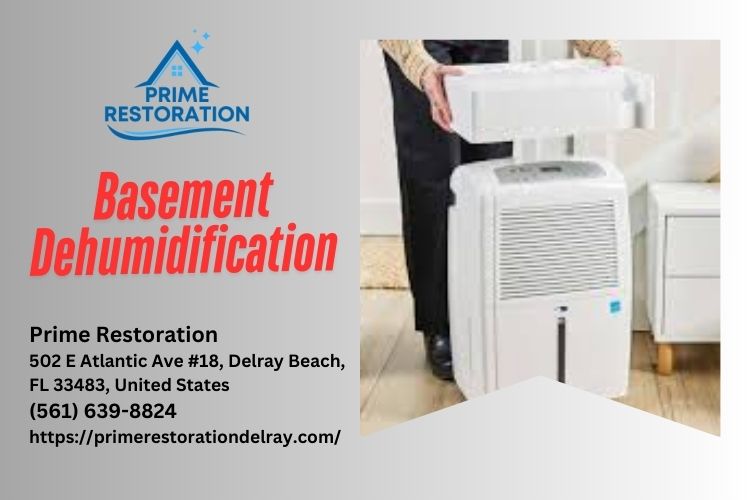Flooding can be a devastating event for homeowners, leading to significant property damage and emotional stress. Preparing your home effectively can mitigate these risks significantly. In this guide, we'll explore comprehensive strategies and expert advice from Prime Restoration that will equip you with the knowledge needed to safeguard your home against flooding.
Understanding Flood Risks
What is Flooding?
Flooding refers to an overflow of water onto normally dry land. It can occur due to various reasons including heavy rainfall, melting snow, or even storm surges during hurricanes. Understanding the different types of floods—river floods, flash floods, coastal floods, and urban flooding—is crucial for effective preparation.
Why Should You Prepare for Flooding?
Preparation can save lives and minimize property damage. According to the National Oceanic and Atmospheric Administration (NOAA), floods are one of the most common and widespread natural disasters in the United States. Homeowners who take proactive measures can lessen the impact of such events.
How to Prepare Your Home for a Flood: Advice from Prime Restoration
Assessing Your Property's Vulnerability
Conduct a Risk Assessment
Begin by evaluating your property's location. Is it in a flood-prone area? If so, consider investing in flood insurance and consult with experts like Prime Restoration, who specialize in water damage restoration services.
- Check local flood maps. Assess drainage systems. Identify low-lying areas on your property.
Understanding Local Regulations
Local building codes may dictate specific requirements for flood prevention. Familiarize yourself with these regulations to ensure compliance while enhancing safety.
Elevating Your Home
Raise Electrical Systems
If you're in a flood-prone area, elevating electrical systems above potential flood levels is crucial. This includes:
Outlets Circuit breakers HVAC systemsInstall Sump Pumps
Sump pumps help remove excess water from basements or crawl spaces. Ensure your sump pump is functioning properly before the season begins.
Creating an Emergency Plan
Developing an Evacuation Strategy
In case of severe flooding, having an evacuation plan is essential:
- Identify multiple routes out of your neighborhood. Designate a safe meeting point. Keep important documents handy in waterproof containers.
Preparing an Emergency Kit
An emergency kit should include essentials like:
- Water (at least one gallon per person per day) Non-perishable food items Flashlights and batteries First-aid supplies Important documents
Staying Informed About Weather Updates
Stay updated on weather forecasts through reliable sources such as NOAA or local news stations. Use apps that send alerts directly to your smartphone so you’re always informed.
Implementing Physical Barriers Against Floods
Installing Flood Vents
Flood vents allow water to flow through rather than accumulate around your foundation, reducing pressure on walls and aiding in quicker drainage.
Using Sandbags Effectively
Sandbags are a cost-effective way to divert water away from your home:
Fill bags halfway; they work better when not overfilled. Stack them in staggered rows for maximum effectiveness. Ensure they create a continuous barrier around entry points.Waterproofing Your Home’s Exterior
Sealing Foundation Cracks
Inspect your foundation regularly for cracks or gaps where water could enter:
- Use hydraulic cement or epoxy sealants to fill cracks.
Maintaining Gutters and Downspouts
Ensure that gutters are clear of debris so that rainwater flows freely away from the house:
- Clean gutters at least twice yearly. Extend downspouts away from the foundation by 6 feet or more.
Insurance Considerations for Flood Preparedness
Understanding Flood Insurance Policies
Regular homeowner's insurance doesn’t cover flood damage; you need separate coverage:
Review FEMA guidelines on flood insurance. Consult with insurance agents about available policies tailored for your area.Post-Flood Response Strategies
Immediate Actions After a Flood Event
After experiencing flooding, it's critical to act quickly:

FAQs About Flood Preparation
1. What should I do before a flood warning?
Always stay informed about weather conditions via alert systems and prepare an emergency kit as outlined above.
2. How often should I check my sump pump?
You should check it regularly—ideally every few months—and especially before storm season hits.
3. What type of insurance covers flooding?
Flood insurance is typically provided through the National Flood Insurance Program (NFIP) or private insurers specializing in this coverage.
4. Can I prevent basement flooding entirely?
While complete prevention may not be possible, implementing proper drainage, using sump pumps, and water damage restoration nearby sealing cracks can greatly reduce risk.

5. How long does it take for professionals to restore my home after flooding?
The time frame depends on several factors including the extent of damage; however, professional services like those offered by Prime Restoration aim for efficiency without sacrificing quality.
6. What does water damage restoration involve?
Water damage restoration encompasses assessment, removal of standing water, drying out affected areas, and repairing any structural damage caused by moisture intrusion.
Conclusion
Flood preparedness is not just about having sandbags ready; it’s about understanding risks, planning ahead, and taking proactive measures based on expert advice such as that from Prime Restoration—a leading name in water damage restoration Delray Beach residents trust.
By taking these essential steps seriously, you will not only enhance your home's resilience against potential flooding but also give yourself peace of mind knowing you're prepared for whatever nature throws your way.
For more information on how to safeguard your home against floods or if you require immediate assistance with water-related issues, reach out to us at Prime Restoration:
Address: 502 E Atlantic Ave #18, Delray Beach, FL 33483, United States
Phone: 561) 639-8824
Remember: Being proactive today means securing peace tomorrow!